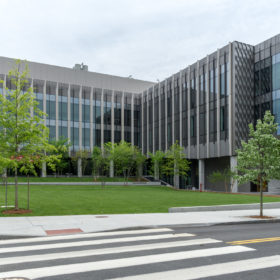
Scientists in the United States have demonstrated simple methods for ‘healing’ the cracks that form in perovskite solar cells. While it is far from clear how the approach could be applied commercially, the work suggests possibilities for maintaining the performance of perovskite cells in long-term operation.
Microcracks are an occupational hazard for most PV technologies and their potential to form thanks to heat or mechanical stress – on production lines and in the field – has hampered the ambitions of many in the solar industry. The European Union’s PHYSIC project has estimated the economic impact of microcracks at hundreds of millions of euros per year in lost energy output and repair and replacement costs.
In perovskite solar cells, cracks can form easily and the long-term stability of the material remains a key concern even as the technology edges toward commercial production.
“Everybody’s chasing high efficiency, which is important,” said Nitin Padture, director of the Institute for Molecular and Nanoscale Innovation at Brown University in Providence, Rhode Island. “But we also need to be thinking about things like long-term durability and mechanical reliability if we’re going to bring this solar cell technology to the market.”
Bent
With that in mind, students in Padture’s laboratory took a closer look at crack formation in perovskites and conducted a simple demonstration showing they could effectively be healed almost as easily as they form. “In material science, things that are easy to make also tend to be easy to break,” said Padture. “That’s certainly true of perovskites, which are quite brittle. But here we show they’re also quite easy to fix.”
The group’s experiments, described in the paper Facile healing of cracks in organic-inorganic halide perovskite thin films and published in Acta Materialia, consisted of depositing two perovskite thin films (methylammonium lead triiodide and formamidinium lead triiodide) onto a plastic substrate and then bending the substrate to induce cracking in the perovskite.
After using a scanning electron microscope (SEM) to confirm the film had cracked, the researchers bent the substrate in the opposite direction, based on a theory the compressive stress placed on the film would ‘heal’ the cracks. The group also investigated whether heat could have a similar healing effect.
Voila!
SEM imaging showed the cracks had indeed disappeared and further investigation using X-ray diffraction confirmed they had ‘fully healed’ and the area could carry a mechanical load. Heating the substrate to a temperature of 100 degrees Celsius, as well as bending it, were both found to have a healing effect.
Previous studies have established careful exposure to heat and light – as well as additives to precursor materials – can help make perovskite devices more stable. However, those research projects focused more on working out defects and making the materials more stable prior to testing.
Padture acknowledged the difficulty of formulating a commercial application to ‘heal’ cracks in perovskite cells after manufacturing but said he is confident the group’s findings can be of use to the industry.
“It is good news,” he said. “It suggests that fairly simple healing methods may help maintain performance in these kinds of solar cells.”
Lắp đặt điện mặt trời Khải Minh Tech
https://ift.tt/2X7bF6x
0906633505
info.khaiminhtech@gmail.com
80/39 Trần Quang Diệu, Phường 14, Quận 3
Lắp đặt điện mặt trời Khải Minh Tech
https://ift.tt/2ZH4TRU
Không có nhận xét nào:
Đăng nhận xét